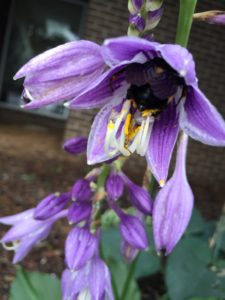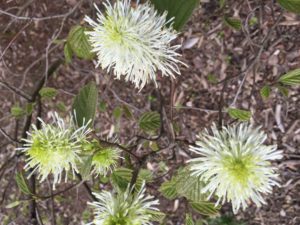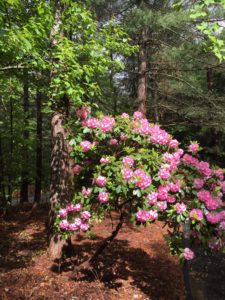Garden Update – April
go.ncsu.edu/readext?668635
en Español / em Português
El inglés es el idioma de control de esta página. En la medida en que haya algún conflicto entre la traducción al inglés y la traducción, el inglés prevalece.
Al hacer clic en el enlace de traducción se activa un servicio de traducción gratuito para convertir la página al español. Al igual que con cualquier traducción por Internet, la conversión no es sensible al contexto y puede que no traduzca el texto en su significado original. NC State Extension no garantiza la exactitud del texto traducido. Por favor, tenga en cuenta que algunas aplicaciones y/o servicios pueden no funcionar como se espera cuando se traducen.
Português
Inglês é o idioma de controle desta página. Na medida que haja algum conflito entre o texto original em Inglês e a tradução, o Inglês prevalece.
Ao clicar no link de tradução, um serviço gratuito de tradução será ativado para converter a página para o Português. Como em qualquer tradução pela internet, a conversão não é sensivel ao contexto e pode não ocorrer a tradução para o significado orginal. O serviço de Extensão da Carolina do Norte (NC State Extension) não garante a exatidão do texto traduzido. Por favor, observe que algumas funções ou serviços podem não funcionar como esperado após a tradução.
English
English is the controlling language of this page. To the extent there is any conflict between the English text and the translation, English controls.
Clicking on the translation link activates a free translation service to convert the page to Spanish. As with any Internet translation, the conversion is not context-sensitive and may not translate the text to its original meaning. NC State Extension does not guarantee the accuracy of the translated text. Please note that some applications and/or services may not function as expected when translated.
Collapse ▲April is the month when spring flowers are blooming and leaves start emerging! There is plenty for the mountain gardener to do.
Plants in Flower
Crabapple, Carolina Silverbell, Dogwood, Redbud, Flowering Cherry, viburnum, Pearlbush, Lilac, Carolina Rhododendron, Sweet Shrub, Piedmont Azalea,
Loropetalum, Exbury Azalea, Spirea, Pieris, Evergreen Azaleas, Kerria (Easter Rose), Drooping Leucothoe, Weigela, Wisteria, Periwinkle, Ajuga, Candytuft,
Violets, Columbine, Trillium, Flags (Dwarf Iris), Bloodroot, Bleeding Heart, Jack-In-The-Pulpit, Anemone and Siberian Squill.
What to Fertilize
- Fertilize shrubs if not done in March.
- Once you can determine whether your fruit trees have any fruit, you can decide how much fertilizer to give them.
What to Plant
- Many gardeners prefer to transplant azaleas in April so they can group the
plants according to their flower color. - The following vegetables can be planted this month: beets, cabbage, Chinese
cabbage, Swiss chard, broccoli, cauliflower, onion, and potatoes.
What to Prune
- Prune spring-flowering plants like azalea, lilac, forsythia, spirea, and
weigela after the flowers fade. - Prune berry producing shrubs like holly and pyracantha while in flower to
prevent complete removal of all of this season’s berries. - If needed, trim spring flowering trees like Bradford pear, flowering cherry and redbud.
- Cut out any winter damage that may have occurred this year.
Pest Outlook

Try to avoid using pesticides if at all possible to protect native bees and other beneficial insects.
- Observe the following landscape shrubs for the following insect pests: azalea-lacebug, rhododendron-stem borer, boxwood-leaf miner, euonymus-scale, hemlock-wooly adelgid, and juniper-spruce mites and spray as needed.
- Watch broccoli, cabbage and cauliflower for caterpillars. Use an organic product containing BT if control is necessary.
- Observe your squash plants at first bloom near the base of the stem to control squash vine borer. Cover stems with straw to protect them.
- Spray your apple and other fruit trees with following this organic spray guide.
- Scout for pests regularly. Use all non-pesticide control tactics first saving pesticides as a last resort.
Lawn Care (see our calendar here)
- Tune up your mower and weed trimmer!
- Maintain mowing height of fescue and bluegrass at 3 inches.
- Do NOT fertilize cool season lawns such as tall fescue or Kentucky bluegrass anymore this spring.
Propagation
- This is a good time to layer new plants by lowering a branch of your favorite shrubs and covering it with soil and a stone. Plants such as forsythia and azalea layer easily.
Specific Chores
- Visit your local garden centers and nurseries to see what plants and products are available.
- Mulch all of your landscape plants as needed. Pine needles, hardwood mulch, and pine bark are good mulches.
- Prepare labels for all new plants and keep records on how well they perform.






